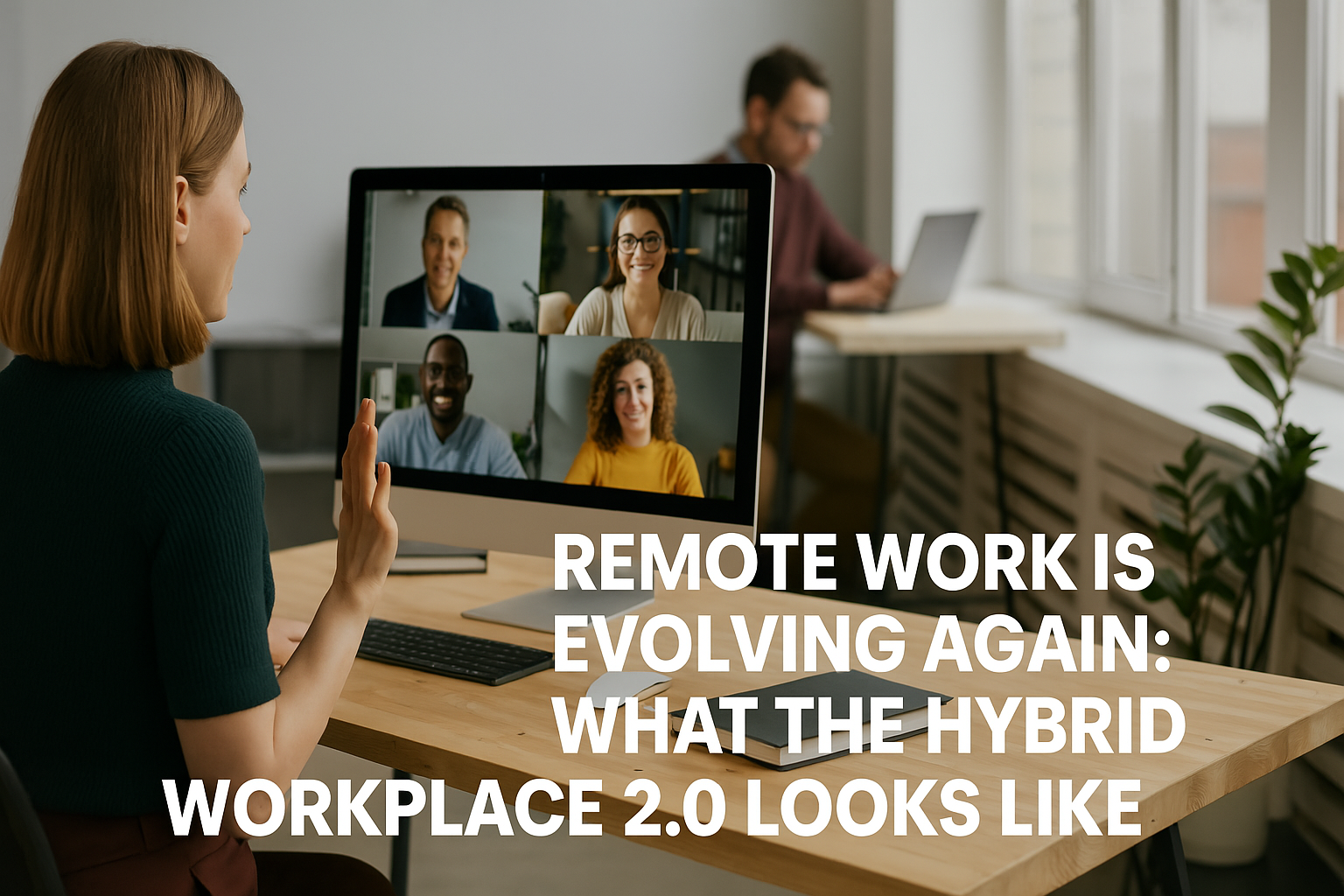
Just a few years ago, remote work was considered a revolutionary shift. Today, it’s the norm—and it’s evolving once more. In 2025, the world is entering the era of Hybrid Workplace 2.0, a smarter, more strategic blend of flexibility, accountability, and purpose-driven collaboration.
It’s no longer about where employees work—it’s about how well they work and why they come together at all.
1. Purpose-Driven Office Days
In Hybrid 2.0, in-office days are no longer fixed or arbitrary. Companies are designing “intentional presence” policies—bringing teams together only when in-person collaboration is truly more productive. These days are used for brainstorming, client meetings, product launches, and culture-building sessions—not routine tasks.
Google, for example, redesigned its hybrid policy around moments of “maximum impact”—allowing teams to decide when physical interaction boosts outcomes.
2. Asynchronous Communication is the New Default
To support global and time-flexible teams, asynchronous workflows are replacing constant video calls. Teams now rely more on recorded video updates, collaborative documents, and AI-powered task trackers. This shift not only respects diverse time zones but also boosts deep focus and autonomy.
Platforms like Loom, Notion, and Slack Canvas are powering the silent but synchronized rhythm of modern work.
3. AI-Powered Collaboration Tools
Artificial intelligence is revolutionizing teamwork in Hybrid 2.0. AI assistants now schedule meetings, summarize virtual calls, auto-tag files, and suggest project timelines. Teams can complete 3 days of work in 3 hours—because the tools now work with them, not just for them.
Microsoft 365 Copilot and Google Duet AI are deeply embedded into day-to-day workflows, making knowledge-sharing frictionless and faster.
4. Flexible Roles, Fixed Culture
Companies have realized that flexibility isn’t just about location—it’s about designing work around life. Hybrid 2.0 offers flexible hours, customizable roles, and even “work-from-anywhere” months. Yet, culture remains non-negotiable.
To maintain unity, leaders invest more in virtual rituals, AI-driven employee engagement tools, and meaningful face-to-face meetups that reinforce shared values.
5. Performance Measured by Output, Not Hours
Gone are the days of logging in for the sake of visibility. The new era prioritizes outcomes over optics. Clear goals, OKRs (Objectives & Key Results), and real-time dashboards help managers and employees focus on results. Trust replaces micromanagement.
This shift has led to increased job satisfaction, productivity, and retention—especially among Gen Z and millennial workers.
⸻
Final Thoughts: Redefining the Future of Work
The hybrid model isn’t a stopgap—it’s a reimagined way to work, built on flexibility, trust, and intelligent collaboration. In 2025, Hybrid Workplace 2.0 is proving that when businesses design work around people—not the other way around—everyone wins.
We’ve entered a time where work is no longer a place. It’s a dynamic, evolving experience—and those who get it right are setting the pace for the future of business.